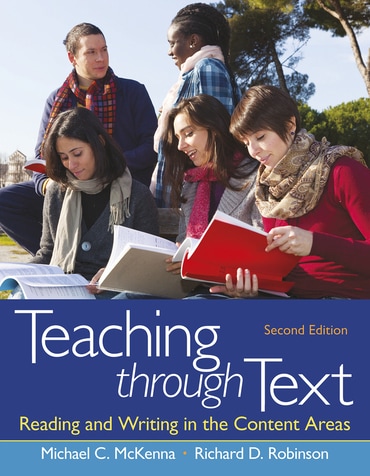Switch content of the page by the Role togglethe content would be changed according to the role

Teaching through Text: Reading and Writing in the Content Areas, 2nd edition
Published by Pearson (July 14, 2021) © 2014
- Richard D. Robinson
- Michael C. McKenna
Pearson+ subscription
per month
-month term,ISBN-13: 9780137558827
Teaching through Text: Reading and Writing in the Content Areas
Published 2021
Paperback
$101.32
Price Reduced From: $126.65
ISBN-13: 9780132685726
Teaching through Text: Reading and Writing in the Content Areas
Published 2013
Need help? Get in touch